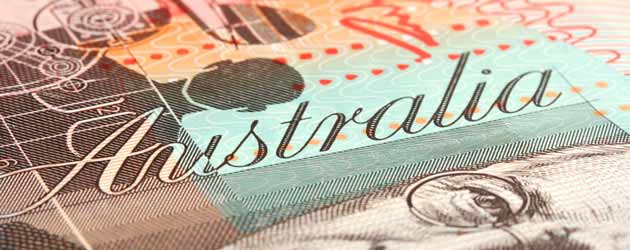
The Pound to Australian Dollar exchange rate (GBP/AUD) declined by -1.6 cents to reach a weekly low 1.6449 yesterday as the ‘Aussie’ recovered some ground from the 33-month low that it hit earlier on in the week.
In Australia Prime Minister Julia Gillard – the country’s first woman leader – was ousted from power by former PM Kevin Rudd just three months before a new general election. Rudd takes over the governing Labour Party at a time when strong economic growth, low unemployment and soft interest rates are not enough to keep the people of Australia happy.
The Pound to Australian Dollar exchange rate (GBP/AUD) declined by -1.6
Before being appointed Gillard pledged not to introduce an unpopular carbon tax, but in 2010 she did exactly that. Since then support for the Labour Party has leaked like a boat made out of Swiss cheese; the change-up in leadership appears to be a final attempt to bring back voters in the build-up to September’s general elections. However, the formidable deficit in recent opinion polls suggests that the Labour Party’s final throw of the dice may not have a substantial effect on the outcome and Political Scientist Nick Economou also gives the Labour Party little hope of holding onto office:
“Australian voters don’t like disunited parties, and these guys are nothing if not disunited”.
The ructions did not have a significant affect on the consolidating ‘Aussie’ Dollar, which gained some support against the Pound as the latest GDP report from the United States showed that US economic output was substantially slower in the first three months of 2013 than originally thought. US annualised first quarter GDP was revised down from 2.4% to 1.8% and US Personal Consumption was slashed from 3.4% to 2.6%.
The disappointing revelation throws more doubt over the Federal Reserve’s statement last week that it is happy with the current pace of domestic growth. In light of yesterday’s softer-than-expected figures some traders took the view that a tapering of asset purchases could still be some way off and this led to a slight reversal of risk sentiment. With risk aversion abating, momentarily at least, the commodity-correlated Australian Dollar managed to advance by over 1.6 cents against the British Pound.
Sterling’s losses were exacerbated by a report from the Bank of England in which the UK Central Bank warned that sudden rises in interest rates could lead to damaging consequences for British commercial banks. Issues surrounding the fragility of the Eurozone were also mentioned but the main message that markets took from the BoE Financial Stability report was that the UK banking sector is not immune to future interest rate hike-induced shocks and this led to a drop in demand for the Pound.
Surprisingly, Sterling was unable to capitalise on the soft US Gross Domestic Product figures against the US Dollar. As riskier asset classes rallied across the board – the Canadian Dollar, Australian Dollar & New Zealand Dollar – GBP/USD sunk by over a cent to a near-2-month low of 1.5298 as traders continued to evaluate the efficacy of the British banking system.

Comments are closed.